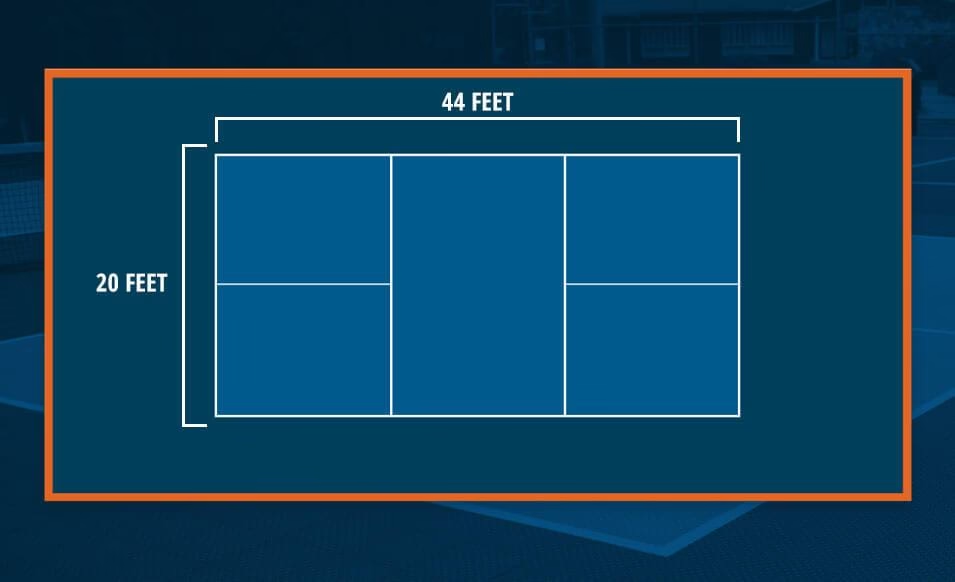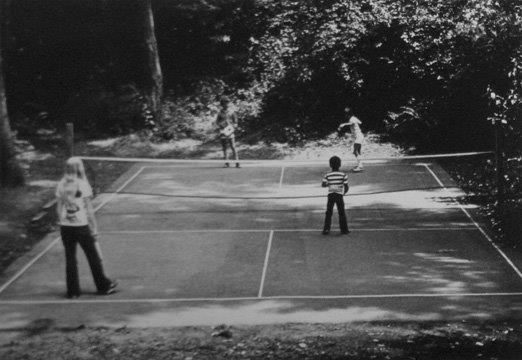Blog
how wide is a pickleball court

Pickleball, a sport that seamlessly blends elements of tennis, badminton, and table tennis, has taken the recreational world by storm. Though it may be played in backyards, gyms, and parks, understanding the dimensions of a pickleball court is essential for players and enthusiasts alike. Whether you’re a seasoned competitor or a curious beginner, knowing the exact measurements of this dynamic playing surface can enhance your experience and appreciation of the game. So, how wide is a pickleball court? Let’s dive into the specifics that define this vibrant sport’s arena and explore how its dimensions contribute to the fast-paced, strategic gameplay that captures the hearts of many.
Understanding the Dimensions of a Regulation Pickleball Court
The regulation dimensions of a pickleball court are essential for ensuring fair play and consistency in the game. A standard court measures 20 feet wide and 44 feet long for doubles play, which accommodates two teams of two players each. For singles play, the court remains the same length but retains its width, resulting in a well-balanced area that promotes both strategy and agility. The net, set at a height of 36 inches at the sidelines and 34 inches at the center, divides the court and challenges players to master their serve and volley techniques.
Alongside the court’s length and width, several key areas are critical to the overall gameplay. The non-volley zone, commonly referred to as the “kitchen,” measures 7 feet from the net on both sides and plays a pivotal role in preventing players from executing smashes directly at the net. The boundaries of the court can be marked with different colored lines, making it easier for players to determine whether a ball is in or out during play. Understanding these dimensions not only enhances player performance but also elevates the enjoyment of the game.

Exploring the Importance of Court Width for Gameplay Dynamics
When considering the dynamics of pickleball as a sport, the width of the court plays a crucial role in shaping player interactions and strategies. Unlike traditional tennis courts, which can be expansive, the pickleball court measures 20 feet wide. This narrower width necessitates a unique approach to gameplay where players must possess excellent reaction times and agility. The compact nature of the court fosters a more intense and engaging match, as players are often closer to one another, leading to rapid exchanges and strategic positioning. The emphasis on lateral movement can elevate the excitement and challenge, encouraging players to rely on clever shot selection and tactical plays.
The dimensions of the court also influence various aspects of gameplay, from serving techniques to net play. Because the width limits the area for powerful groundstrokes, players need to adjust their playstyle accordingly. The shorter distance requires players to master the art of placement over power, making shot accuracy paramount. Additionally, with only 20 feet to cover, teamwork and communication become vital, especially in doubles matches. The following table highlights key features impacted by court width:
| Feature | Impact of Court Width |
|---|---|
| Player Proximity | Increases interaction and rapid exchanges. |
| Shot Selection | Promotes strategy over brute force. |
| Movement | Encourages agility and quick reflexes. |
| Team Dynamics | Enhances communication and collaboration. |

Recommendations for Optimal Layout in Recreational Spaces
To ensure a fluid and enjoyable experience in recreational spaces, it is essential to thoughtfully consider the layout. A well-planned area not only enhances playability but also accommodates a larger group of participants. When designing spaces for activities such as pickleball, focusing on the dimensions and flow is crucial. Here are some key elements to consider for optimal layout:
- Court Dimensions: Ensure that the pickleball courts have precise measurements, typically 20 feet wide by 44 feet long for doubles play.
- Buffer Zones: Allocate ample space around the courts. A minimum of 10 feet of clearance on the sides and at the back enhances safety and allows players to maneuver freely.
- Seating Areas: Incorporate designated spectator seating that offers a clear view without obstructing play. Comfortable benches or chairs promote longer stays.
- Accessible Pathways: Design pathways that are easily navigable, especially for seniors or those with mobility challenges, ensuring that all players and spectators can move freely.
The layout should also accommodate various recreational activities beyond pickleball, providing versatility for mixed-use spaces. Integration of amenities such as restrooms, water stations, and shade structures can elevate the overall experience. To visually represent these considerations, refer to the table below for quick reference on essential dimensions and clearances:
| Element | Recommendation |
|---|---|
| Court Width | 20 Feet |
| Buffer Zone – Side | 10 Feet Minimum |
| Buffer Zone – Back | 10 Feet Minimum |
| Seating Arrangement | Clear View, Comfortable |
| Pathway Width | At least 4 Feet |

Adapting Pickleball Court Measurements for Various Environments
When considering how to adapt pickleball court measurements for different environments, it’s essential to recognize that the standard dimensions can often be modified to fit various spaces. For instance, if you’re limited by your backyard size, you might want to reduce the court’s length or width. Although the official size of a pickleball court is 20 feet wide by 44 feet long for doubles play, alternatives can be created without compromising the essence of the game. Different court configurations can lead to unique gameplay experiences. Instead of the regulation dimensions, here are some adaptations to consider:
- Mini Pickleball Court: Ideal for younger players or novice enthusiasts, a mini court can measure as small as 10 feet wide and 22 feet long.
- Indoor Spaces: For gyms or multi-sport arenas, you can temporarily mark courts using tape or mats, adjusting dimensions based on available space.
- Temporary Outdoor Courts: Using chalk or portable nets, outdoor adaptations can be made for parks, which can vary in size based on grass or concrete areas.
Below is a table showcasing how different environments can influence court adaptations:
| Environment Type | Adapted Width | Adapted Length |
|---|---|---|
| Backyard | 16 ft | 40 ft |
| Community Gym | 20 ft | 44 ft |
| Park | 15 ft | 38 ft |
| School Playground | 18 ft | 42 ft |
Ultimately, being flexible with court measurements allows for an inclusive approach to playing pickleball, regardless of physical limitations. By creatively adapting your space while keeping standard dimensions in mind, players can enjoy a fun and challenging game tailored to their surroundings.
Q&A
Q&A: How Wide is a Pickleball Court?
Q: What are the dimensions of a pickleball court?
A: A standard pickleball court is 20 feet wide. This width applies to both the indoor and outdoor courts, ensuring uniform play across different venues.
Q: Is the width of a pickleball court the same as that of a tennis court?
A: No, it isn’t! A tennis court is significantly wider, measuring 36 feet for doubles play. Pickleball courts are designed to promote quick rallies and dynamic play, which is partly facilitated by their narrower width.
Q: Why is the width of a pickleball court important?
A: The width contributes to the intensity and pace of the game. A narrower court promotes shorter rallies, faster reflexes, and encourages strategic gameplay, keeping it engaging for players of all skill levels.
Q: What are the dimensions for singles play on a pickleball court?
A: For singles play, the court width remains the same at 20 feet, but players have more room to maneuver since the sidelines are not in play, effectively making the court area feel more spacious.
Q: Are there any differences in court dimensions for recreational vs. competitive play?
A: Not really! Both recreational and competitive pickleball courts adhere to the same dimensions. This consistency helps players transition seamlessly between casual games and formal competitions.
Q: How does court width compare to other popular racquet sports?
A: Beyond tennis, which we’ve already compared, badminton courts are narrower at 17 feet, while squash courts are also more enclosed, focusing on a very different playing style. Pickleball’s wider yet still compact court allows for a unique balance of space and tactical challenge.
Q: Are there any special markings on a pickleball court related to its width?
A: Yes! The court includes several key lines: the centerline, baseline, and sidelines. The service boxes are also marked, dividing the court into two sides of equal width, which is crucial for serving and gameplay.
Q: Can I play pickleball on a smaller court?
A: While the official dimensions are set, many recreational players adapt them for smaller spaces, especially in backyard or casual settings. Just keep in mind that this might change the dynamics of the game!
Q: What should a beginner know about court size before playing?
A: Beginners should be mindful of the court’s dimensions as it affects their movement and strategy. The relatively compact space allows players to quickly improve their agility and reflexes, which are vital skills in pickleball.
Q: Lastly, why do pickleball courts seem so popular?
A: The popularity can be attributed to their accessible size! The 20-foot width strikes a balance that makes the game fast-paced yet manageable for players of all ages and abilities, fostering a welcoming environment for newcomers and seasoned players alike.
Final Thoughts
the dimensions of a pickleball court not only set the stage for this engaging and fast-paced game, but they also underscore the careful planning that goes into creating a space where players can showcase their skills and enjoy friendly competition. Measuring 20 feet wide for doubles play, the court strikes a balance between accessibility and challenge, making it suitable for players of all ages and abilities. As more people are drawn to this dynamic sport, understanding the layout becomes essential for both enthusiasts and newcomers alike. So, whether you’re planning to build your own court or simply curious about this rapidly growing game, knowing the specifics of a pickleball court’s width can help you appreciate the intricacies of every match. Now that you’re equipped with this knowledge, grab your paddle and join the fun—after all, the court is waiting for you!












